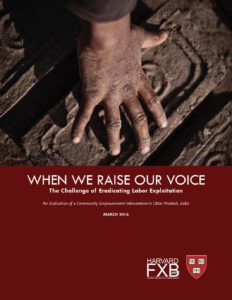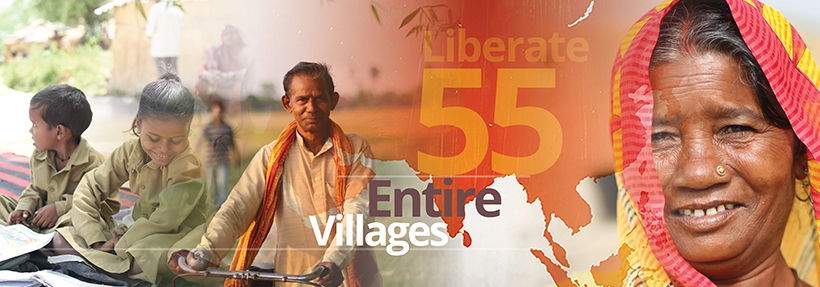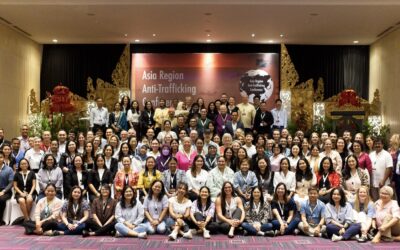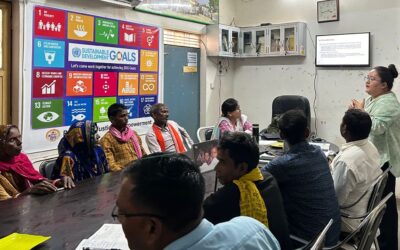One of the major challenges in the fight against modern slavery is proving that a particular strategy successfully and sustainably liberates people from bondage, and that there’s an improvement in socioeconomic conditions in places where slavery has been overcome. A recent investigation by Harvard University has determined that the Free the Slaves community-based model is a success on both counts.
 The groundbreaking study by Harvard’s FXB Center for Health & Human Rights is called “When we Raise Our Voice: The Challenge of Eradicating Labor Exploitation.” Researchers found that the community-based approach used by Free the Slaves front-line partner MSEMVS successfully eradicates bonded-labor slavery. The research team also found a direct correlation to improved socioeconomic conditions in areas where slavery was eradicated. Not only was there a reduction in violence and household debt, but livelihoods also improved. People were able to eat better and access government services.
The groundbreaking study by Harvard’s FXB Center for Health & Human Rights is called “When we Raise Our Voice: The Challenge of Eradicating Labor Exploitation.” Researchers found that the community-based approach used by Free the Slaves front-line partner MSEMVS successfully eradicates bonded-labor slavery. The research team also found a direct correlation to improved socioeconomic conditions in areas where slavery was eradicated. Not only was there a reduction in violence and household debt, but livelihoods also improved. People were able to eat better and access government services.
MSEMVS has helped develop and field test the Free the Slaves abolition model, combating bonded labor slavery in the Indian State of Uttar Pradesh. The strategy utilizes a community empowerment model that allows the people affected by exploitative labor practices to prioritize the changes they want to make. MSEMVS then walks with the community through recognizing their legal rights and building bridges between groups to foster greater change. The Harvard study to evaluate the model’s impact was made possible by funding from our colleagues at the Freedom Fund, an organization that also provides support to MSEMVS.
The study found that MSEMVS had a great “contribution to reducing indebtedness and threats of violence, improving wage levels and generating a sense of collective efficacy.” The intervention also had “a strong effect on food security, access to medical care, civic participation and take up of government programs such as the national rural job creation scheme.”
These findings are especially important because MSEMVS works in one of the world’s worst slavery hot spots, with people enslaved in agriculture, carpet making and brick factories. Laborers are trapped by mountains of debt that they are enslaved to work off. Their children are expected to carry that burden as well. Since resources are scarce and law enforcement often proves ineffective, these community members are more vulnerable than ever. This is where MSEMVS comes in. Activists educate villagers about their rights before they fall victim to traffickers claiming such debts obligate people to work for them.
The comprehensive strategy involves the creation of community vigilance committees, which were found by Harvard team to make a sustainable impact in the community’s ability to identify potential traffickers and exploitative practices. These committees put the power of change in the hands of the people most involved in the fight against slavery and the ones with the most at stake. Other components of this holistic approach include: legal training, transitional schools for child slavery survivors, and income generation activities. These components equip communities with tools to eradicate slavery in their region and to prevent further exploitation. Community groups are linked together to maximize their effectiveness.
The Harvard study found that the community-focused approach has made a significant impact in reducing and eliminating bonded labor slavery in Uttar Pradesh. Some of the improvements experienced included: 30 percent higher wage growth, significantly reduced household debt, and increased access to public health care. These changes help communities feel empowered and able to rise against the forces that enslave their members.
See more about the work of FTS and MSEMVS on our India webpage.
Learn how you can help free entire villages from slavery by joining our spring 2016 funding campagn!




